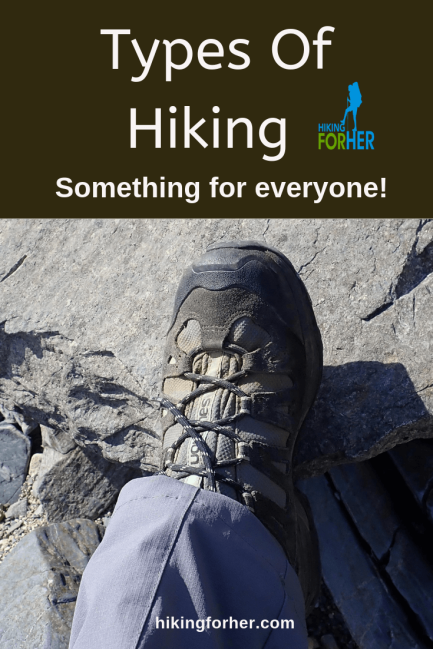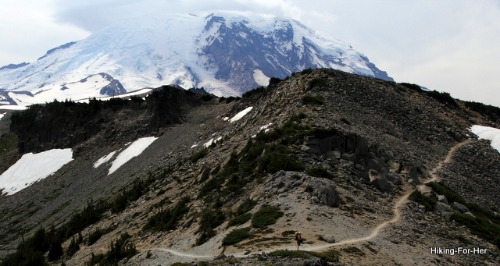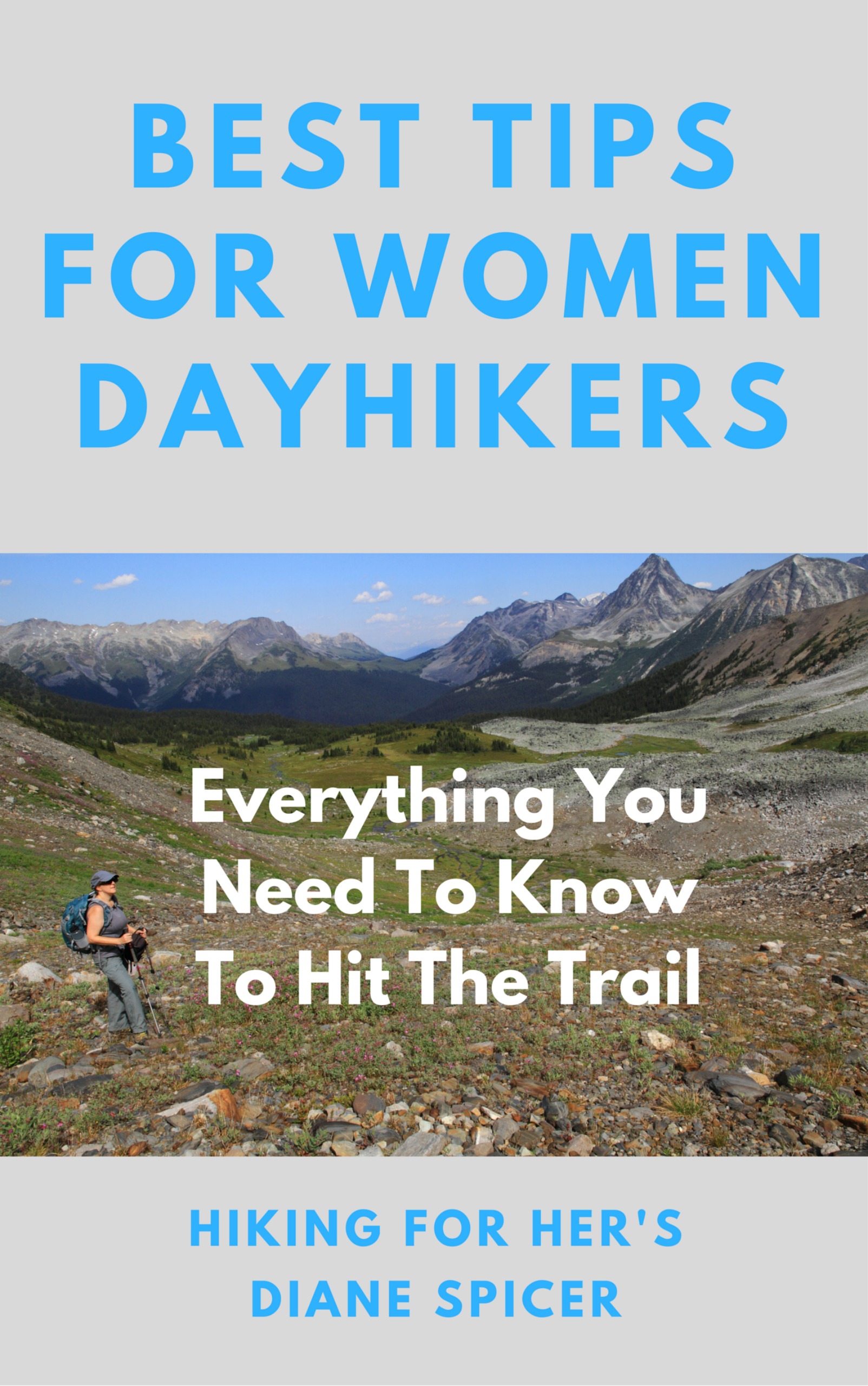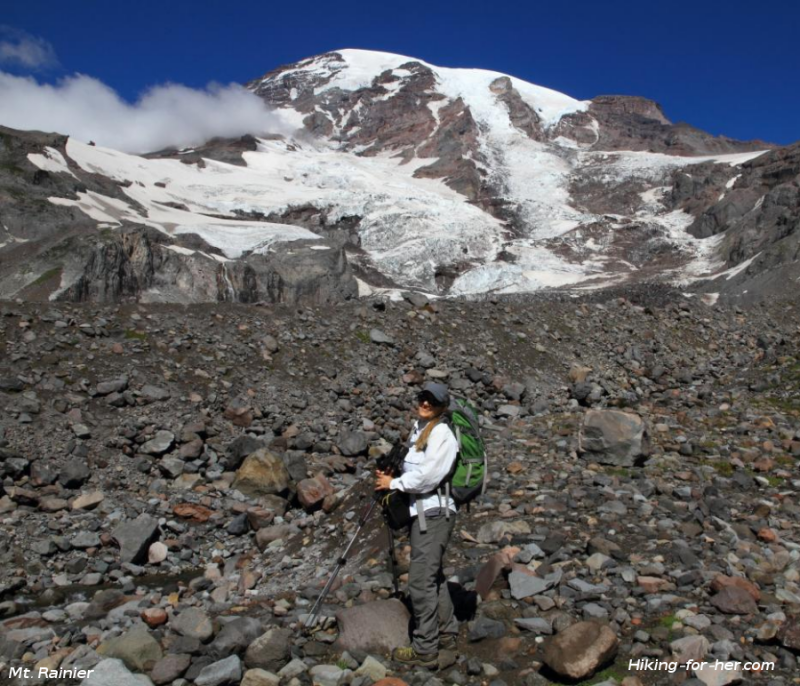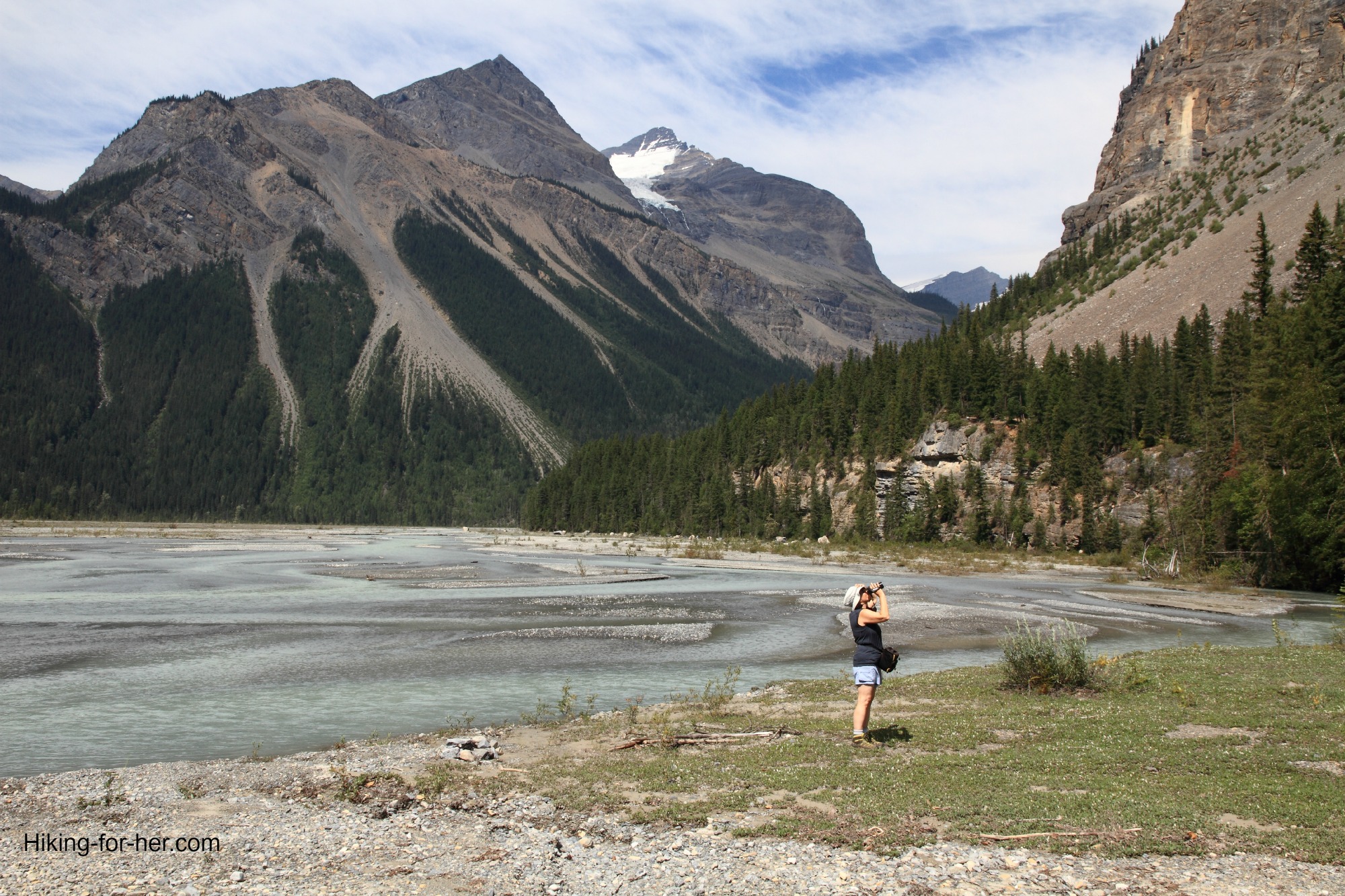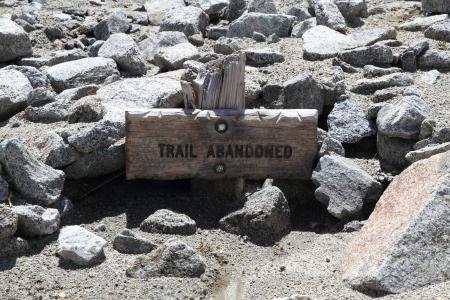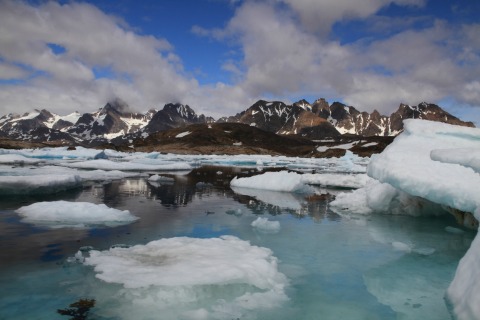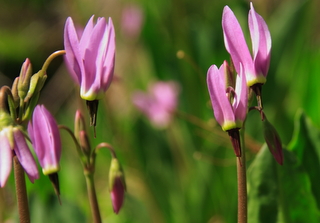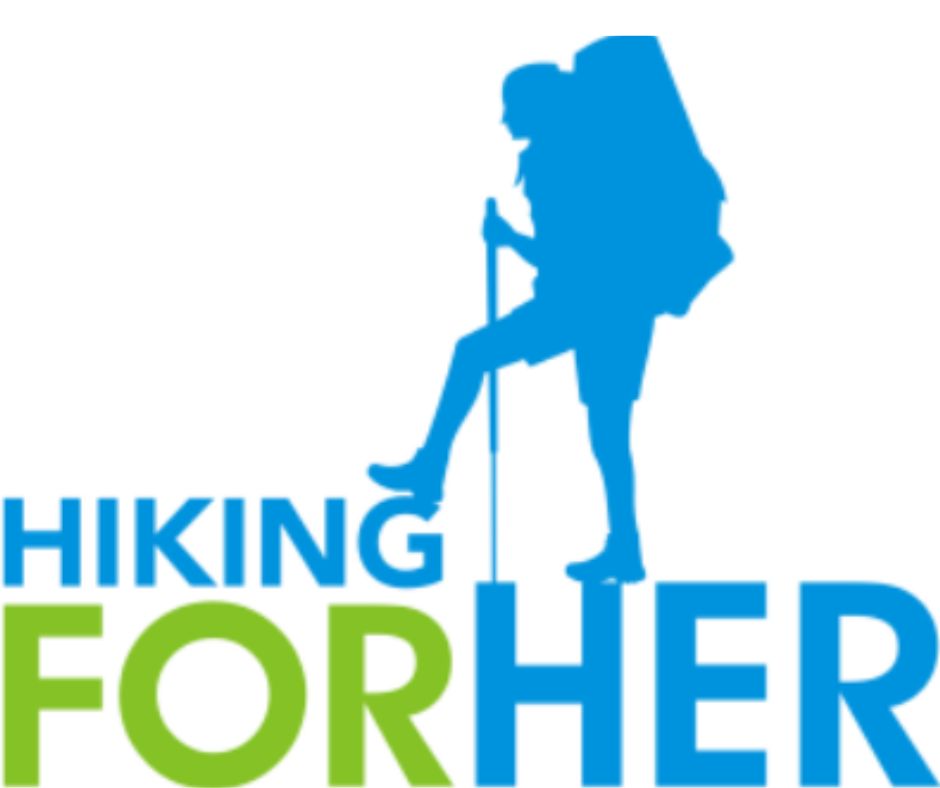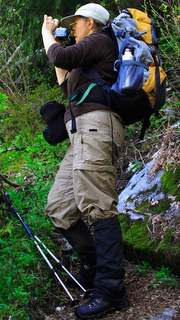Enjoy Happy Trails, the free monthly newsletter from Hiking For Her
Receive a free resource: "Hiking Layering System Explained"
Types of Hiking:
So Many Great Hike Options!
By Diane Spicer
Types of hiking?
You mean, hiking is more than just walking?
- Yes, definitely yes.
And therein lies the beauty of hiking!
You can do your own thing, and still be a member of the hiking community.
- Types of hikers (social or solo) and types of trails are a mix and match extravaganza, which makes for some highly interesting trail encounters.
- And the best hiking trails and best gear are a personal preference.
But we can all agree that there are distinct types of hiking, which appeal to various people and are suited to distinct regions.
Want to see your options quickly?
Drop down to all the types of hiking:
- day hiking
- overnight hikes or weekenders
- backpacking
- backpacking options
- fastpacking
- solo hiking
- soft hiking
- hike in a class
- over forty hiking community
- hiking for romance
- hiking for hidden treasure
- hiking for weight loss
- hike in the dark
- rain hikes
- barrier free hiking
- hiking with dogs
- hiking with special diets
- naked hiking
- socially responsible hiking
- hiking as pilgrimage
- Pacific Northwest hiking destinations
- best Mount Rainier National Park hiking
- Southwest hiking
- Canadian Rockies hiking
- backcountry wilderness hiking
- glacier hiking
- heli-hiking
- winter hiking
- spring and fall trails
- hiking during hunting seasons
- hiking as an elder
- menopausal hikers
- family & organized youth group hiking
- hiking for health benefits
- mental hiking
- hiking to explore and learn
- urban hiking
- hiking for relaxation
- hiking to celebrate
- who to hike with
- find a trail buddy
- types of hikers
Where are you right now
on the hiking continuum?
If you're new to hiking, you might want to start exploring all the types of hiking with this heartfelt and simple hiking advice.
More to check out as you're getting started as a hiker:
- Learn four great reasons to start hiking.
- Understand the types of hikers you'll encounter on the trail. (Which one are you?)
- Find an ideal female hiking partner.
- Learn how to read cues on how to interact with 6 types of hikers.
- Plan your best hiking vacation.
Or dive right into the overview page you're on to discover all of the types of hiking, with plenty of hiking tips to get you started for each of them.
Types of hiking:
day hikes
If you're a beginner hiker, dayhikes are the way to start building trail skills.
Select well marked, maintained trails within easy commuting distance from home.
Study a map of the area before you leave the trail head so you can develop these important hiking skils:
- Scope out the terrain to estimate how tough the hike will be in terms of time and effort.
- Calculate your turn around destination and time point.
- Spot water sources (or be sure to carry extra water if there are none).
- Anticipate landmarks (if you don't reach them, maybe you took a wrong turn).
More day hiking tips
to get you started
Along with packing a great day hike lunch, be sure to carry the hiking ten essentials in your backpack just in case that wrong turn costs you hours of daylight.
- Even if it's "just" a day hike, you need to be prepared to take care of yourself outdoors overnight.
Once you have a few seasons of dayhikes under your boots, you might want to consider navigating off trail using maps and GPS navigation skills.
Want all of the best hiking tips
for day hikers all in one spot?
This Hiking For Her book gathers them together for you!
- Paperback and electronic formats
- Brimming with tips, suggestions and trail wisdom from a trail veteran.
More types of hiking:
overnight trips
Why turn around and go home when you can stay overnight in a favorite hiking destination?
- An overnighter or weekend backpacking trip is the way to go!
However, you're taking a big step (hiking pun intended) by combining camping with hiking.
Planning a backpacking trip requires a longer time investment (both planning and trail time)...
and a greater commitment to safety and comfort.
But you have an advantage!
Start with these best tips for planning a successful overnight.
Extra tip:
If you're just getting started with overnight hikes, base camping might be best.
- Make solid plans to provide a reliable home away from home (a.k.a. your tent or a tarp) in all but the mildest weather.
Types of hiking:
backpacking
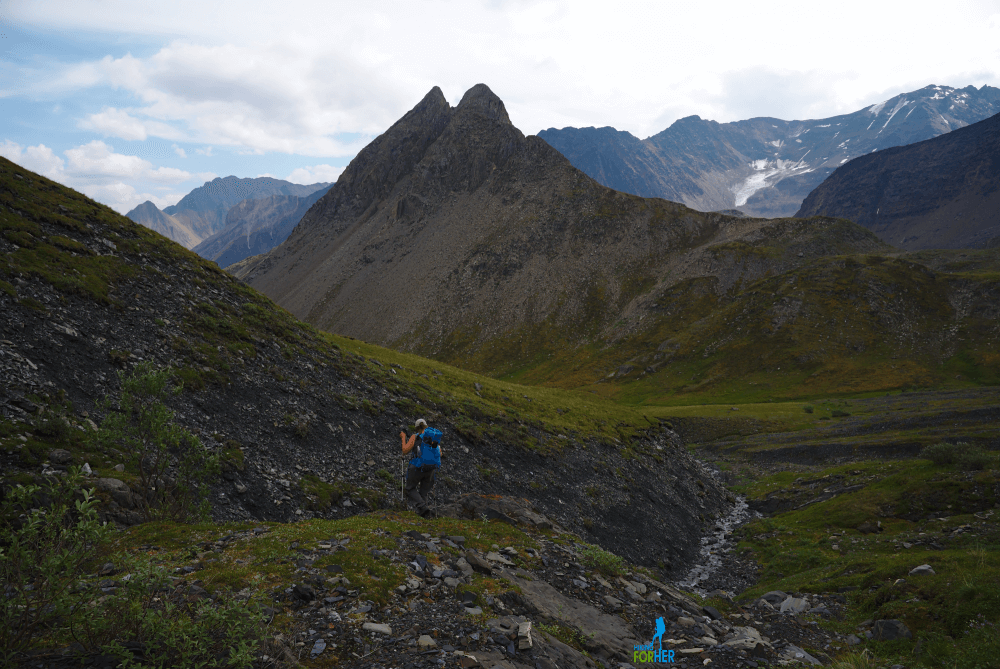
Everybody's gotta start somewhere, and keep going from there.
Day hikers may graduate to combining hiking with camping, as we just saw with overnight and weekend hiking trips.
But if you want to go "all in", find someone who knows a wee bit more than you about backpacking and give a multi day backpacking trip a try.
Or use these Hiking For Her trail vetted tips to start your planning:
Backpackers need more
Regardless of which level of hiker you identify with as you transition into "more than just day hiking", staying out longer than a few days (an extended backpacking trip) demands more from you.
As in:
- more strength (bigger backpack to hold the best hiking gear and lots of food),
- more smarts: trail conditions, weather patterns, terrain navigation, personal safety to name just a few
- more extensive planning
- more attention to crafting a rock solid gear list
Shhh! Here's the secret
about backpacking!
A multiday backpacking trip also yields a much more robust payoff.
I'm talking about priceless experiences like:
- wildlife sightings from you tent before the dayhikers arrive, or after they head home in the evening
- stargazing in silence under inky black skies (shooting stars, satellites, Milky Way, swooping bats)
- the serenity that comes with using your physical, rather than mental, muscles day after day
Nothing gives you deeper satisfaction than gazing at a mountain peak or leafy ridge from the peacefulness of your camp site, knowing that you got yourself AND your gear there using the strength of your legs and your trail smarts.
Types of hiking: backpacking subtypes
Yes, it's true.
Not all backpackers hit the trail in the same way.
Your backpacking options depend upon the length of time you're on the trail, your physical conditioning as well as your hiking goals.
Here's a quick run down:
- Multi day backpackers like loop trails, allowing them to start and end at the same trail head with no need to arrange for a shuttle or pick up.
- Other multi day backpackers do an "out and back" along the same trail. (The same trail looks different, really!)
- Section hikers will choose a long trail (details below) and get going, knowing they will come off before it's completed and come back at a later time to enjoy more.
- SLASH hikers will rack up a lot of mileage on a Super Long-Ass Section Hike
- Distance backpackers aim to complete a long trail like the PCT, AT or DCT all in one go, hopefully before the weather turns the trail against them. They refer to themselves according to their direction of travel, as in NOBO (north bound) or SOBO (south bound).
- Yo-yo hikers not only do a long trail in one direction and complete it, but they turn around and go the entire distance back to where they started: the ultimate loop hike!
- Ultralight (UL) backpackers? They're after the smallest weight possible for each and every item of gear and bite of food. Use these UL tips to get yourself lightened up!
The call of the wild
for backpackers in the U.S.
Once you've mastered the backpacking gear list and have your backpacking menus dialed in, you're going to crave more trail time in out of the way places.
Sooner or later, the call of the wild will begin to whisper in your ear.
You want bigger adventures!
Some suggestions:
For an off-the-beaten path place to backpack, try the Porcupine Mountains in the upper peninsula of Michigan.
To go even more remote in that part of the world, you can try Isle Royale hiking.
If you fall in love with backpacking, you're going to start eyeing the long trails in various regions of the United States.
But there are shorter but less crowded trails to tempt you:
- Wonderland Trail around Mount Rainier (Washington)
- Superior Trail (Upper Midwest)
- Arizona Trails
- Colorado Trails
- Ice Age Trail (Wisconsin)
- Chilkoot Trail (Canada)
If the idea of a loop trail near heavily populated areas appeals to you, consider the 1000+ mile long Buckeye Trail in Ohio.
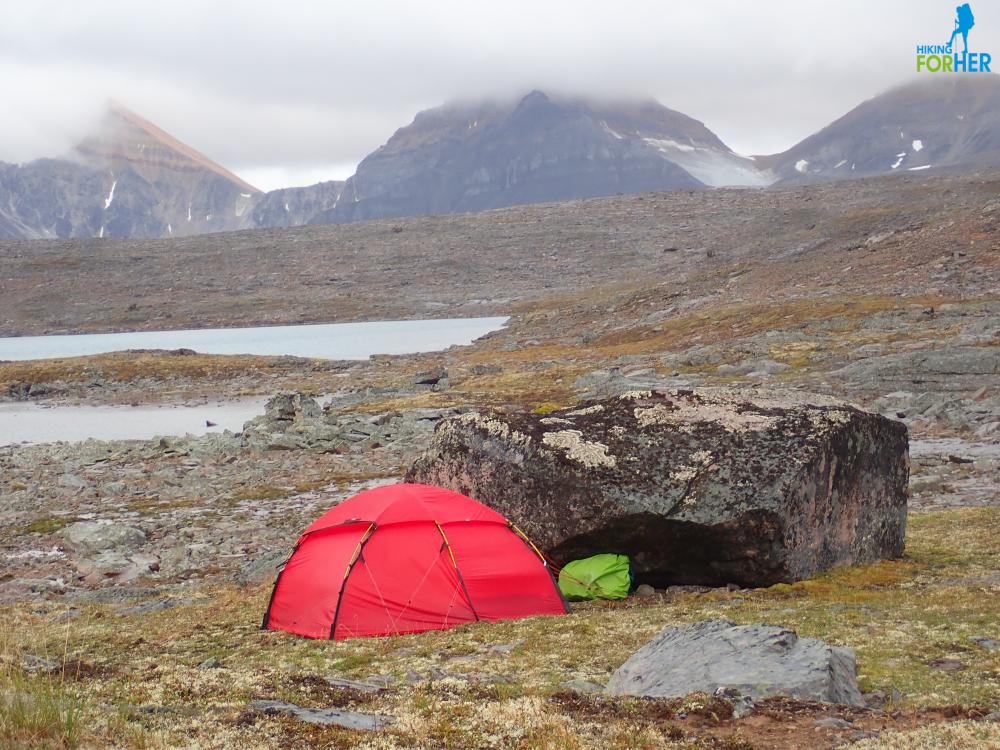
Fastpacking
This is a new addition to the types of hiking list for you perhaps.
Think speed demon meets ultralight backpacker. If that doesn't bring up a visual, imagine a trail runner with enough gear and camping equipment to stay out for several days.
Because I know nothing about this type of backcountry travel, I will hand you over to REI's thorough discussion of fastpacking here.
Types of hiking:
Solo hiker approach to the trail
Not everyone wants to hike with a trail buddy. Or has one.
And not all female hikers want to do group hiking.
Interested in going it alone on the trail?
Dive into these tips to make sure you're ready to keep yourself safe and confident:
Soft hiking
You might have been doing this type of hiking all along, but didn't yet have a name for it.
Soft hiking means no bucket lists of hikes that MUST be completed within a certain amount of time.
Soft hiking means enjoying the amount of time and mileage you want to do, rather than the "faster, further, conquer the challenge" approach that seems to dominate the hiking community.
It takes the "HYOH" (hike your own hike) philosophy at face value.
You can tailor your hiking to what interests you most, like wildflowers or waterfalls.
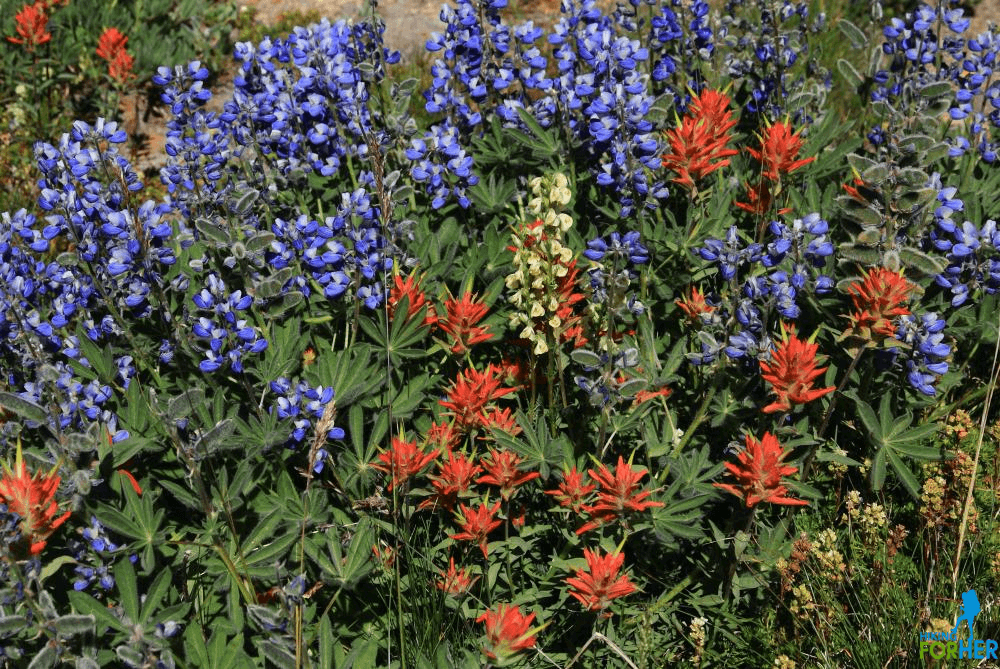
Hike and camp with others
in a class
Sometimes the best way to get started is to take a beginner level class.
It provides structure, a safe environment for your questions and concerns, and a knowledgeable instructor who can give immediate feedback.
Once you know the basics of being a hiker, you can take more advanced classes to strengthen and expand your hiking skill set.
REI Co-op offers classes like this.
- Read these five great reasons to take a class!
Over forty hiker
Slower hiking is not a curse, it's a chance to try a new type of hiking (see soft hiking abov e).
Read my tips for older hikers here.
Let's continue our look at the types of hiking
you might like to do by going off trail a little bit,
so to speak.
Hiking for romance
If your significant other suggests a backpacking trip, why not go for it?
Or why don't you suggest it?
Types of hiking for women can definitely include a romantic get away.
- Just use these tips to make your trail time add up to romance, even in the face of the realities of hiking.
And don't overlook the possibility that a spark of romance might occur in those REI classes mentioned above!
- Where else can you easily meet hikers who share your passion for the trail?
Hiking for treasure!
Geocaching for hikers is hiking with a definite purpose in mind:
- Finding a secret, hidden cache of goodies that only non-muggles can find
- And then bragging about it to other geocachers :)
You'll need the coordinates of the cache, a navigational unit like a GPS or smartphone app, and a set of sharp eyes to locate your treasure.
That link above will get you started.
This is a great way to get kids interested in hiking, because their innate curiosity will pull them along the trail (snacks help).
Hiking for weight loss
No way around the fact that hiking is hard work in terms of sustained muscle contractions and physical strength.
- In fact, hikers are classified as endurance athletes!
If you've set a weight loss goal and are looking for an effective way to burn calories, consider this fact:
- It's possible to burn 5,000+ calories on a dayhike, although more modest numbers can be achieved each time you hit the trail.
Here's my take on what hiking for weight loss looks like.
Forming a regular hiking habit will also tone up your major muscle groups and lead to a serious addiction to the outdoors.
While that might not move the needle much, your hiking clothes will fit better and you'll notice a different reflection in the mirror (or alpine lake while you eat lunch).
- Once you hit your weight loss goal, you can transition into other types of hiking. Bookmark this page, and return when you're ready for new ideas and tips.
- Wear high performance plus size clothing that fits and looks great while you're pursuing your weight loss goal so your hiking addiction won't be thwarted.
Interesting pick on the types of hiking list:
Try a hike in the dark
Does this sound like a scary idea to you?
Night hiking is not for everyone, but it's a great skill to develop.
And the rewards of navigating a trail using only your night vision are a big thrill.
Ease into the darkness by choosing a moonlit night.
- These trustworthy tips for night hiking will get you started.
Rainy weather hiker:
add it to the list of
types of hiking and give it a try
Don't let Mother Nature dictate when you'll take a hike.
Be ready for those gloomy, wet days with these tips:
Be pleasantly surprised by the strong vegetal odors wafting off a wet trail: wet pine needles, dripping branches, saturated duff.
And prepare for more animal sightings than usual, when other humans are off the trail and the animals can go about their day in a more relaxed manner.
Barrier free hiking
Not everyone can access a dirt packed or rocky hiking trail.
For folks with mobility issues, and those who hike with folks who use a wheelchair or stroller, accessible hiking trails are a must.
- Use these free resources to locate national, state and local accessible trails
Hiking with dogs

Sometimes the best trail companion is your canine.
That assumes you've trained her to be a good citizen to wildlife and other hikers, of course.
Hiking with dogs can get easier with these tips:
Hiking with
special dietary needs
Types of hiking can be pretty generic because we're all pretty much alike in the anatomy department.
But some of us (myself included) need to pay careful attention to the food we pack for day hikes and backpacking trips.
Examples of special hiking diets:
And let's not neglect hikers with dietary preferences, such as organic trail food.
Not sure what to eat on a hike? Use these resources.
Hiking in your birthday suit?!
Did you know that some hikers prefer to hike with nothing between their skin and the brambles?
For more on naked hiking, read this! Don't worry, no photos, just the facts.
Not quite ready to bare it all?
- How about barefoot hiking to start you off?
Showing your skin and bare toes to the world is definitely one of the more unique types of hiking!
Socially responsible hiking
Are you concerned about the vanishing wilderness?
Do you see people trashing a campsite and wonder why they don't respect the outdoors like you do?
Would you like some ideas on how you as a hiker can model the ethics and stewardship of socially responsible hiking?
Read Hiking For Her's thoughts on this important topic here.
Leave No Trace hiking tips are covered here
P.S. Thanks for caring! Mother Earth loves hikers like you
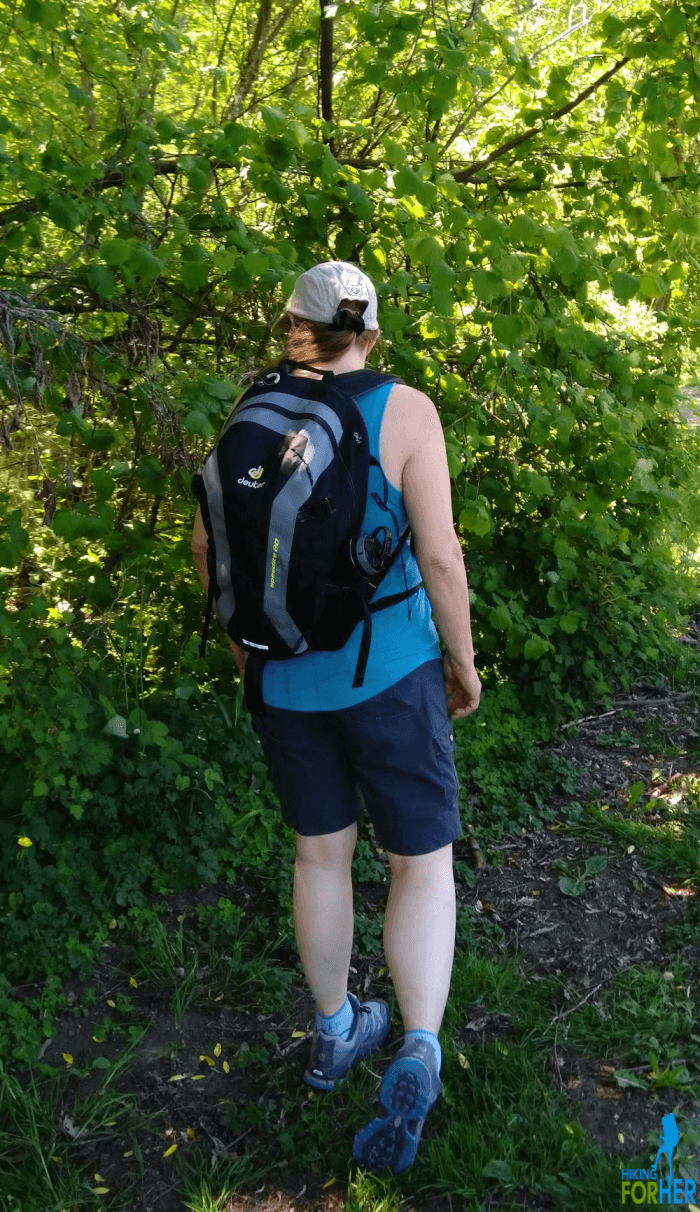
Hiking as pilgrimage
Are you a history buff?
Have you had a major life transition recently and want to walk for clarity and reflection?
Tired of the same old, same old trails and want a long trail experience in a place you've never been before?
- Walking the Camino de Santiago might be just what you need to scratch that itch.
Putting your boots on The Way is the opposite of a wilderness trip, but has much to recommend it:
- exploration of a beautiful, historic region of Europe
- meeting people from around the world
- testing your ability to stay open to opportunities for new sights, sounds and adventures.
Now let's switch our attention to locations on the globe to match the types of hiking you're craving.
Types of hiking in specific regions
The possibilities are endless, aren't they!
How are you going to decide where to hike?
You can start in your own backyard, in local parks, state parks and any established trails that pass by you, as we mentioned above.
Or you could venture forth!
You could come for a hike
in my backyard:
The Pacific Northwest
I happen to live in an incredibly diverse area for hiking opportunities: Washington State, USA.
- On the east side of the state are rolling flat lands with geologic history that is well worth hiking through.
- On the west side, where I live near Seattle, are the mountains: the Olympic Range on the coast, and the Cascade Range (divided into North, Central and South in this state).
If you've ever wanted to get in some serious alpine wandering time, you can read up on what Pacific Northwest hiking has to offer you.
Washington State has several active volcanoes with lots of hiking trails near (and on) them, too!
- Mount Rainier hiking is my favorite. You'll see why in this photo!
Interested in Vancouver Island, BC hiking?
- Consider the challenging but rewarding West Coast Trail.
Mount Rainier day hikes:
the best types of hiking!
If Mount Rainier piqued your interest, as just one example of a fantastic Mount Rainier hike, try Comet Falls and beyond to Van Trump Park.
- Detailed hike description AND video here
While you're on the Paradise side of the mountain, check out Reflection Lakes and hike up to Pinnacle Peak.
Be sure to do Narada Falls.
Or Eagle Peak, on the opposite end of the Tatoosh Range.
Loving the idea of lots of Rainier day hiking?
Use these detailed descriptions, photos and videos to plan more of the best Rainier day hikes:
Or take a peek at these 3 "gotta do" Mount Rainier hike descriptions.
Or head to Southwest United States
for different types of hiking
The Pacific NW is at the top left of your map of the United States.
So you can use my tips for all types of hiking in Washington and Oregon to cross off some bucket list hikes.
But are you ready to head south instead?
New Mexico offers some amazing hiking in the Gila Wilderness.
Arizona hiking trails are numerous, varied, extensive and fascinating.
The Grand Canyon or a hike through a petrified forest sounds appealing, doesn't it?
Nothing says winter like sunny warm days on miles of trails.
Wait, what?
That's winter in Arizona!
- Be prepared with some hot weather hiking tips.
- Avoid heat related illness with these tips.
Too hot to handle?
Some of us like cool summers, and avoid hot trails.
Need to feast your eyes on 14,000 foot peaks?
- Colorado hiking trails are for you.
On the other hand, Yukon hiking in the north has its appeal: solitude, caribou herds, and virtually untouched wilderness.
Why not try both??
Are the Canadian Rockies
calling your name?
If you want cool temperatures, big mountains, high alpine adventures, minimal human company and plenty of chances to encounter bears, why aren't you hiking in the Canadian Rockies?
Here's one hiking trip that's easy to plan for:
- Mount Robson hiking in the Mount Robson Provincial Park in British Columbia.
A great option for a fun hiking vacation is a hike-in backcountry lodge.
Be aware that high altitude hiking brings its own challenges.
Read the tips in that link to get ready to tackle elevation over 6000 feet.
More types of hiking:
wilderness hiking adventures
Big adventure means you'll have to work hard to leave other human beings behind in the front country.
It's not called backcountry hiking for nothing!
A few suggestions based on personal experience:
- If you have the hankering to hike an isolated, pristine wilderness in the middle of Lake Superior, look no further than Isle Royale. A boat or plane ride will get you there.
- Wanna go WAY off the beaten path? Try East Greenland, or the Arctic National Wildlife Refuge (ANWR)!
- Or dare to step foot on the Arctic Circle Trail (Greenland).
- Solitude will be yours in the South Nahanni (Yukon).
- Wrangell St Elias National Park and Preserve in Alaska is another big rugged paradise for hikers to explore! Read my two trips report here.
- The Alsek River, a huge backcountry destination.
Bush planes, helicopters, rafts, boats ... plus your strong backpacking legs will get you into the back country.
Mix and match these for a fantastic adventure.
But be sure your off trail hiking skills are up for it.
And ponder the merits of lighweight or ultralightweight backpacking gear to make your wilderness trips more enjoyable.
- Bush pilots will love you :)
Why not try glacier hiking!
You'll know you're somewhere really special if you set off to explore the surface of a glacier.
This type of hiking is technical, meaning it requires specialized knowledge and gear.
So it's not for everyone.
Plus, you need a glacier, which might be harder to do in the coming decades.
To get a feel for what glacier hiking is like, read my account and see some photos of glacier exploration in Wrangell St. Elias.
Check here for my photos of hiking on the Tweedsmuir glacier, which reaches the Alsek River. (coming soon)
Huge hiking adventures:
heli-hiking
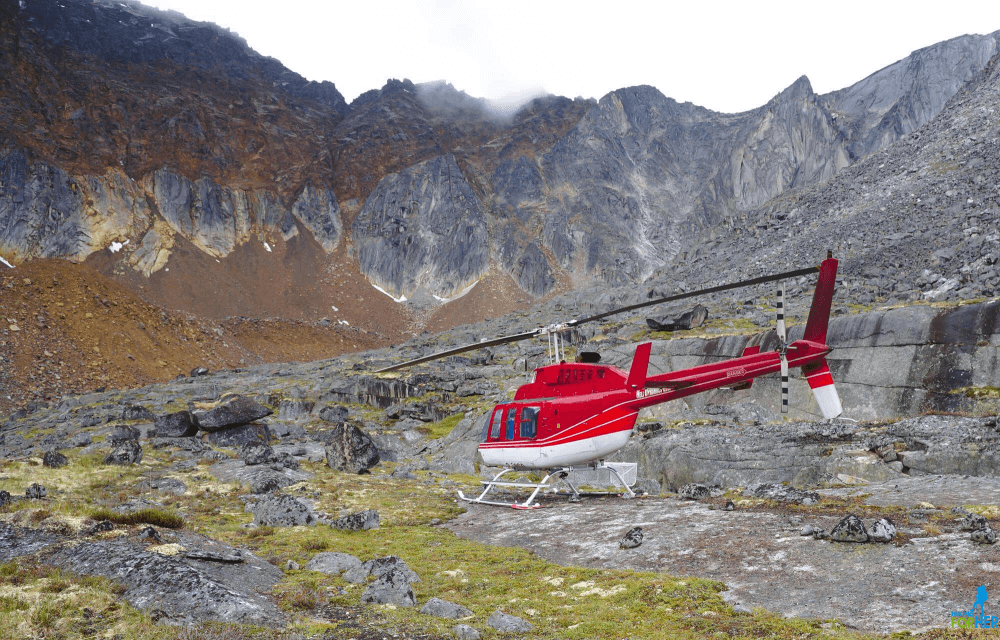
Sometimes trail hiking becomes a bit stale.
To get a taste of real adventure as a hiker, try heli-hiking.
Sounds too luxurious?
Well, it is pricey, but it may be just the slice of heaven you need to create lifelong hiking memories.
If you've never been in a helicopter, you're in for a thrill.
The noise and power of the beast are harnessed for your arrival at pristine backcountry destinations that few humans achieve withmuscle power.
A lot of folks think hiking only happens in the summer.
Wrong!
Let's take a look at seasonal hiking.
Types of hiking:
Winter hikes
Why stop hiking when the snow flies?
There are at least 8 great reasons to take a winter hike.
Snowshoeing is just winter hiking, and it's twice as fun because you can:
- spot fresh animal tracks & understand critter activity
- explore areas that are brush covered or inaccessible during the summer
- listen to the stillness and hush of snow covered trees
- burn lots of calories (second lunch, anyone?) breathing all of that crisp air
Your navigation skills have to be well developed, though.
And your turn around time is absolutely non-negotiable, unless you find snowshoeing by headlamp or full moon an edifying activity: yet another type of hiking.
Just be sure you know these cold weather hiking tips.
Consider what you need to eat and drink, too.
- And use these snowshoeing safety tips.
Even if you don't want to snowshoe, but do want to hike during winter weather, take these winter hiking tips to heart.
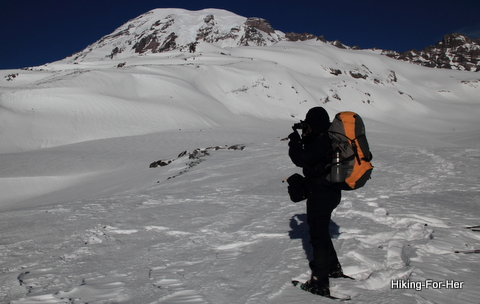 Doesn't this look like a blast??
Doesn't this look like a blast??
Don't neglect your favorite trails
in spring and fall
Hikers get hungry in the spring for green leafy shoots - and you can take that as a dietary preference, a photographic craving, or botanically.
In the spring, trails are muddy and the weather is moody.
Temperatures swing from pleasant to not-so-much.
A spring hiker needs to be prepared!
- Read these tips for spring hiking, and enjoy your spring trail adventures to the fullest.
And once the warmth of the summer sun fades, you've got plenty of trail fun to look forward to.
Make the most of crisp days with this fall hiking clothing and gear guide.
Safe hiking during hunting season
Hikers and hunters share outdoor spaces called trails.
It's your responsibility as a hiker to know when hunting seasons begin and end in the areas you're hiking through.
And it's up to you to make yourself visible, audible, and the opposite of a target.
Use these safety tips to accomplish all of that, so you can co-exist with hunters both on and off trails.
Now let's take a closer look at
how age plays into types of hiking.
Elder hiking: good for you!
As in, congratulations!
Also as in, it's good for you! (benefits of hiking here)
I'm proud to state that I've reached that special age bracket where the phrase "elder hiking" describes me.
But I'd prefer not to put numbers on it.
- In my opinion, age is an attitude, not just your biological age.
However, a basic fact of living in a human body is that accumulated wear and tear on joints and cartilage, plus improper conditioning, can leave an older hiker with aches and pains.
So if you're entering hiking as a juicy ripe tomato kind of woman (as opposed to a hard green tiny tomato), or are getting back into hiking after a surgery or injury, you might want to dip into these tips for folks over the age of ...
Oh, let's say 50 years or so.
I'll let you be the judge of when YOU become a wise old sage on the trail!
Hiking through menopause
As a woman led website supporting female hikers, it's important to encourage you if you're reaching the time of life when your reproductive organs shut down.
Menopausal hiking has its share of tears and triumphs.
I've outlined them for you here.
And shared some tips for hiking with hot flashes.
Teach your hiking skills to
the next generation
Another type of hiking which is near and dear to my heart: teaching young people how to fall in love with hiking.
That's what families are for, right?
But hiking with kids and babies is an art unto itself.
Even more so with teenagers!
Another way to get youngsters out on the trail: organized groups.
I spent many years as a Girl Scout and Cub Scout leader while my son and daughter were growing up.
I led groups of kids from ages 6 through 15 on camping and backpacking trips.
And I love to work with youth leaders on skill building for the next generation of hikers.
If our young people don't appreciate and nurture the outdoors and everything in it, there goes the planet!
So if you're working with kids and hiking, let me know how I can help you, because I hold you in high esteem.
And if family hiking is something you do regularly, congratulations!
Hiking for health
I also want to point out that hiking is good medicine, regardless of your age.
But it might become more important as the candles on your birthday cake increase.
It's known that being in the outdoors for prolonged periods of time helps you deal with stress.
- Nature Therapy, it's called.
That, combined with the cardiovascular and musculoskeletal work out of a hike, will keep you in top shape.
- Read more about the 6 big categories of benefits of hiking
Hiking for fun
If you head into the outdoors, whether a county park or the backcountry of Alaska, to hold onto your sanity and exercise your brain and body, you know that any day hiking is better than any day sitting in a chair.
But is every hike a fun time?
Use this scale to determine what type of fun you're having as a hiker.
Mental hiking = daydreaming
about your next hike
Just in case it hasn't occurred to you, hikers need a break away from the grinding trail once in awhile, too.
If you have a high stress occupation or lifestyle, you really need a break!
I call those types of hiking breaks "mental hiking" as I bask in the sun (or on the couch), plotting my next adventure!
Or daydreaming while I'm waiting in line at the grocery store.
This may be one of the most important types of hiking, since it allows me to roam freely in a way my body can't.
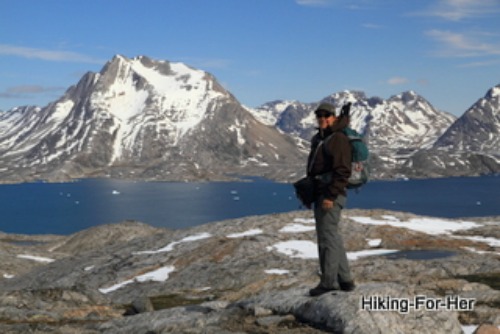
What's your WHY?
While we're on the subject of mental hiking, it might be a good time to consider WHY you're on the trail.
This uncovers a different slant to the subject of types of hiking.
There seem to be 6 types of hikers.
For example:
Are you a "peak bagger"?
- Someone who pushes through to gain a destination, whether it's a peak, a lake, waterfall, viewpoint or some other spot on the map?
- Focused, prepared, conditioned, single minded hikers log lots of miles each season.
Full disclosure: I have 4 maps of the Cascade Mountains, with - I kid you not!- little star stickers on the hiking destinations I've achieved over my 20 years of hiking in Washington State.
The maps have lots of twinkly little stars on them!
So I know a few things about what I refer to as "laser lock" hiking: here's the target, here's the route, LET'S GO!
With age, comes wisdom
But I'm mellowing as I get older.
I now entertain the possibility of other types of hiking.
Hiking to explore and learn
For instance, what about hiking exploration?
If you're on an "out and back" trip, whether it's a day hike, overnight, or multi-day excursion, maybe you're focused on exploring your environment rather than counting miles or attaining a specific destination.
Maybe you're the type of hiker who delves into field guides, trail reports, regional books, and historical documents so you're prepared to catch every interesting area you pass through.
Personal example
Sometimes I hike with my radar set on geologic formations that are clearly mapped on geology maps of the region.
- My husband downloads these free geology maps from the USGS, and we pause occasionally to check out what we're hiking over, around, and through.
We fan out in little circles, pick up rocks, compare notes, and because he's got geology training, he tells me what I'm looking at ;)
I call these hikes my geology field trips!
And we take turns hauling back our "finds": lava bombs smelling of sulfur, gorgeous serpentine chunks, tiny garnets embedded in schist...
This non-destination hiking approach is a wonderful way to connect with the ecosystem, if you extend your attention from what's under your boots (geology) to what's around you:
- Flowers, grasses, shrubs, butterflies, birds (botany, wildlife biology) and to what's above you: towering Douglas firs in my neck of the woods, plus clouds, birds, and the occasional freak storm.
- Birding for hikers is a real thing.
On the way to the rocks, don't trample all of the alpine flowers!
Include "exploration hiking" in your repertoire of types of hiking, and you will come to appreciate your "big backyard" on an entirely different level.
Urban hiking
In major cities, many opportunities for urban hiking beckon to both native and visitor.
If you've never explored with your two feet the place you call home, consider this a challenge! Set up some loop day hikes, or go from one destination to another via parks, trails along waterways, or right through the heart of the urban core.
Visiting someplace new? Check out these urban hiking guides and be prepared with sturdy footwear that you wouldn't use on a hiking trail. Think arch support and plenty of room to wiggle your toes!
Hiking for relaxation
Once or twice a season, I allow myself the luxury of hiking for relaxation.
This is one of the most therapeutic types of hiking imaginable.
How does this approach to the trail work?
- I pick an easy trail and swing a light pack over my shoulders: yummy trail snacks, pen and paper, and some water.
- I let my mood and the trail conditions set my pace.
During the hike, I engage all of my senses:
This gives my dominant visual sense a rest, and I end the hike in a peaceful mental space.
Definitely a great way to reset my outlook on life!
Please give it a try :)
Hiking as celebration
Have a milestone coming up that you'd love to celebrate on the trail?
- Bring something special to eat, pick a destination that includes all of your favorite sights and sounds, and enjoy the freedom of being a strong, happy hiker.
If you're hiking with a trail buddy who is celebrating a big life achievement (like graduation or childbirth, bring along a gift to make her face light up.
- Hiking gift ideas here
Now that we've covered all of the hiking you can try, this question might come up:
Who should I hike with?
Let's roll through your options.
You could:
- go solo hiking
- hit the trail with a significant other
- hike with a male trail buddy
- hike with a group
- hike with your dog
- join a hiking organization
- take a class and meet other hikers
There are many types of hikers
Everyone approaches hiking with a unique blend of habits, skills, expectations and personality.
But after decades of trail time, I've narrowed things down a bit:
But there are more general ways to observe the hikers who share the trails with you, of course, and you can figure out where you belong in the broad spectrum of hikers.
If you didn't find out which type of hiker you are yet:
- Find out here.
So which types of hiking
appeal to you?
You've seen a lot of different approaches to trail time for hikers.
A tempting smorgasbord, no?
Time to choose one direction and go for it!
Here's one last little tip:
If you're just starting out as a hiker, be purposeful about planning:
- Keep track of where you'd like to go, and keep notes in a trail journal once you've been there.
- Learn from your mis-steps, and learn from everyone you hike with (both positive and negative examples).
I always say there are no mistakes, only opportunities for enlightenment that are thrown your way.
Please let this website continue to give you the tools and techniques you need to
enjoy being a hiker, regardless of the types of hiking you "specialize"
in.
Best wishes for hiking the hike you love, each and every time!
Return HOME for lots more hiking tips

